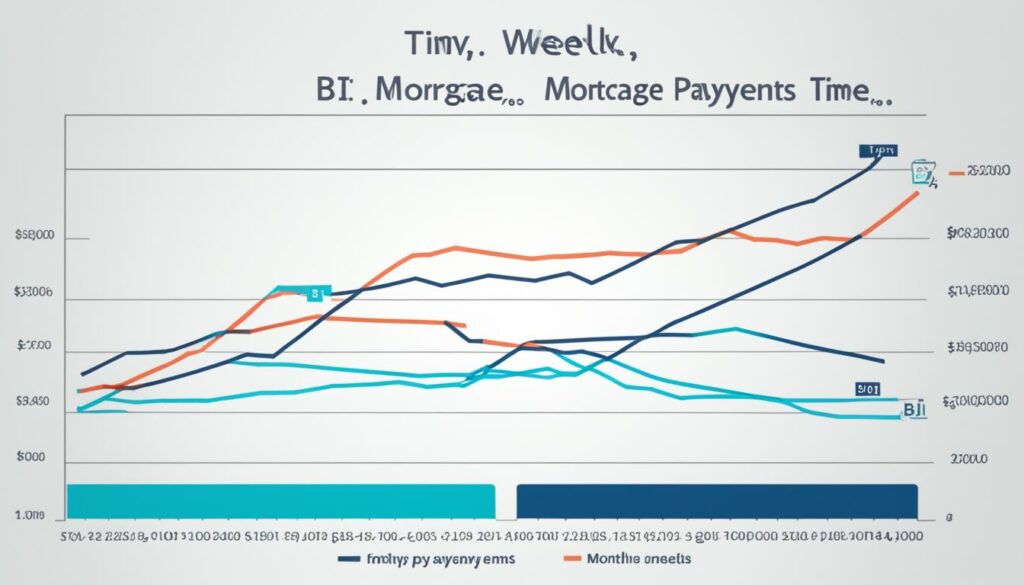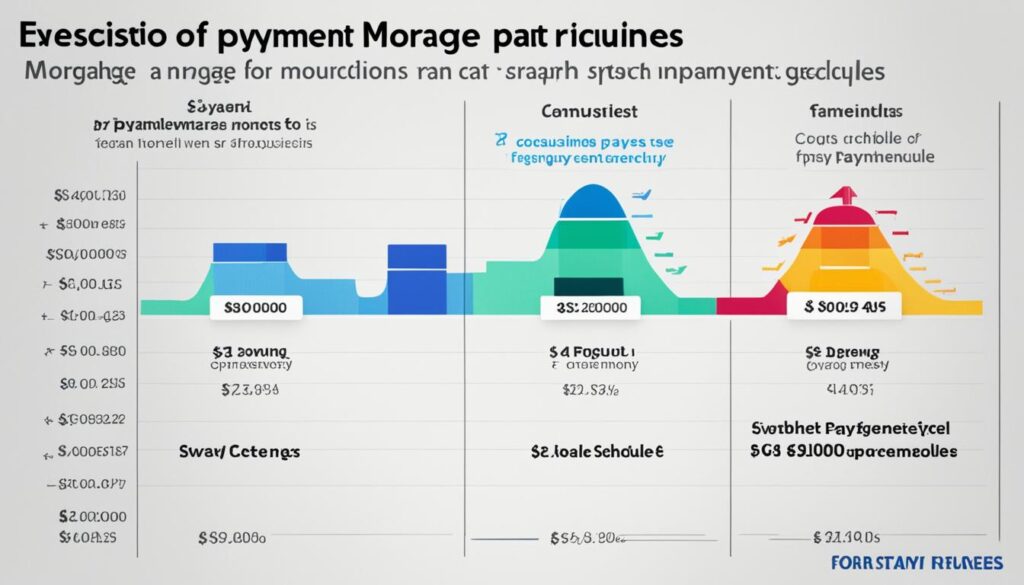Did you know that changing your payment frequency can provide financial flexibility and help you better manage your cash flow? Whether you want to increase or decrease the number of payments you make each year, or adjust your payment schedule for better financial planning and consistency, this article will guide you through the process. We will explore the reasons for changing payment frequency, factors to keep in mind before making any adjustments, compliance with state laws, and the steps to successfully implement the change.
Key Takeaways
- Changing your payment frequency can provide financial flexibility and smoother cash flow.
- Reasons to change payment frequency include better financial planning, consistency, handling employee changes, and compliance with state laws.
- Consider legal guidelines, such as the Fair Labor Standards Act (FLSA) rules, and different payroll periods before changing payment frequency.
- Adjusting payment frequency can help improve financial planning, achieve consistency, and handle employee changes more effectively.
- Ensure compliance with state laws on payment frequency to avoid legal issues.
Reasons to Change Payment Frequency
There are several compelling reasons why changing your payment frequency can be advantageous. Whether it’s for better financial planning, achieving consistency, handling employee changes, or ensuring compliance with state laws, making a switch can benefit both your business and your employees.
Firstly, adjusting your payment frequency can greatly improve your financial planning efforts. If your current payment schedule disrupts your cash flow projections, transitioning to a more suitable frequency can provide better control over your finances and make it easier to manage your budget effectively.
In addition, achieving consistency in your payment frequency is crucial for maintaining clarity and reducing confusion. If your current pay period is irregular or inconsistent, it can lead to disorganization and challenges in tracking expenses. By changing your payment frequency, you can establish a more predictable and reliable payment schedule, facilitating smoother financial operations.
Furthermore, adapting your payment frequency allows you to handle employee changes more seamlessly. For instance, when employees transition between hourly and salaried positions, adjusting the payroll frequency accordingly ensures accurate and compliant compensation. Having a flexible payment system that can accommodate different pay periods is essential for effectively managing employee payroll.
Last but not least, changing your payment frequency helps you comply with state laws governing payroll practices. While there aren’t federal regulations specifying how often employees should be paid, many states have established guidelines and minimum frequency requirements. Adhering to these laws is essential to avoid legal issues and ensure your business operates within the boundaries of the law.
By considering these reasons and understanding the impact that changing payment frequency can have on your financial planning, consistency, handling employee changes, and compliance with state laws, you’ll be equipped to make informed decisions that benefit both your business and your employees’ financial well-being.
Considerations Before Changing Payment Frequency
Before making any changes to your payment frequency, it’s crucial to consider the legal guidelines and potential consequences involved. Failure to comply with these guidelines can lead to employee lawsuits and other legal complications. One notable case that highlights the importance of following payroll frequency guidelines is Wilkinson v. W.Va State Office of Governor.
Another crucial aspect to consider is understanding the different payroll periods available, which include weekly, biweekly, semimonthly, and monthly options. Each of these periods has its own implications and considerations that must be taken into account to make an informed decision.
Please see the table below for a detailed comparison of these payroll periods:
| Payroll Period | Description |
|---|---|
| Weekly | Employees are paid on a weekly basis, typically on a specific day of the week. |
| Biweekly | Employees are paid every two weeks, resulting in 26 pay periods per year. |
| Semimonthly | Employees are paid twice a month, usually on specific dates such as the 15th and last day of the month. |
| Monthly | Employees are paid once a month, usually on the same day each month. |
It’s essential to analyze the implications of each payroll period in relation to your business’s operations and the needs of your employees. By considering both the legal guidelines and the different payroll periods, you can ensure a smooth transition and avoid any potential issues.
Changing Payment Frequency for Better Financial Planning
Changing payment frequency can have a significant impact on your financial planning. If you currently experience three-paycheck months and struggle to budget for them, consider switching to a more financially consistent method, such as weekly, semimonthly, or monthly payrolls. By aligning your income with a consistent payment schedule, you can better manage your budget and avoid cash flow disruptions.
Let’s dive deeper into how changing payment frequency can enhance your financial planning efforts:
- Cash flow projections: Having a consistent payment frequency allows for more accurate cash flow projections. You can better anticipate your income and plan your expenses accordingly, which is crucial for maintaining financial stability.
- Budget management: Switching to a more financially consistent method provides you with a reliable income stream, making it easier to create and stick to a budget. With a predictable payment schedule, you can allocate funds more effectively and avoid overspending.
- Avoiding three-paycheck months: Three-paycheck months can be challenging to manage since they often lead to unexpected surplus funds that may be mistakenly spent. By moving to a consistent payment frequency, you can eliminate these irregularities, ensuring a steady budget throughout the year.
- Financially consistent method: Whether you opt for weekly, semimonthly, or monthly payrolls, choosing a financially consistent method allows you to establish a routine. This consistency offers peace of mind and simplifies your financial planning process.
Switching payment frequency not only provides better financial planning but also improves your overall financial well-being. With consistent cash flow and a more predictable budget, you can confidently pursue your financial goals and maintain financial stability.
Achieving Consistency with Payment Frequency
If your current payment frequency involves semimonthly paydays, which don’t occur on the same day of the week, it can lead to confusion and disorganization for some small business owners. When paydays are inconsistent, it becomes challenging to plan and manage finances effectively, causing unnecessary stress.
Switching to pay periods with consistent paydays, such as weekly or monthly, provides a solution to this issue. With weekly paydays, you can expect a consistent paycheck every seven days, while monthly paydays occur on the same day each month, allowing for predictable cash flow.
By aligning your payment frequency with these more organized options, you can avoid the confusion and disorganization that come with semimonthly paydays. This shift enables you to create a more structured financial routine and plan for expenses and savings more efficiently.
To illustrate the benefits of achieving consistency with payment frequency, let’s take a look at the following scenario:
“As a small business owner, I used to experience a lot of confusion and stress with my semimonthly paydays. They would fall on different days of the week, making it challenging for me to keep track of my income and expenses. This inconsistent payment schedule often resulted in budgeting errors and unnecessary financial strain. However, when I switched to weekly paydays, my life changed for the better. I now receive a reliable paycheck every Friday, allowing me to plan ahead and manage my cash flow with ease. The transition to a consistent payment frequency has brought clarity, organization, and peace of mind to my financial life.”
By implementing a consistent payment frequency, you can bring order and structure to your financial management, making it easier to navigate your business’s cash flow. Whether you opt for weekly or monthly paydays, the key lies in choosing a frequency that aligns with your business’s needs and provides the stability and predictability required for smooth financial operations.

Comparing Payment Frequency Options
| Payment Frequency | Advantages |
|---|---|
| Weekly |
|
| Monthly |
|
As shown in the table above, both weekly and monthly payment frequencies offer distinct advantages in achieving consistency. Depending on your business’s unique needs and goals, you can select the frequency that best suits your financial management requirements.
Handling Employee Changes with Payment Frequency
When an employee’s position changes from hourly to salary, it may require a change in the payroll frequency. Some businesses pay employees using different pay periods depending on their employment status. For instance, hourly workers may be paid monthly, while salaried employees are paid biweekly. Adjusting the payment frequency accordingly ensures accuracy and compliance with the law.
Changing an employee’s payment frequency is crucial to maintain consistent and fair compensation. It ensures that hourly workers receive their salaries on a monthly basis, while salaried employees receive their paychecks biweekly.
Adapting the payment frequency to reflect changes in an employee’s employment status helps to streamline the payroll process. This adjustment ensures that employees are paid in a timely manner and in accordance with the law, ensuring accuracy and compliance.
“Adjusting the payment frequency for employees is essential to ensure accuracy and compliance with the law.”
Adapting Payment Frequency for Hourly and Salaried Employees
When an employee transitions from being paid hourly to receiving a salary, it is important to update their payment frequency. Hourly workers are often paid monthly, while salaried employees typically receive their paychecks biweekly.
Adapting the payment frequency for hourly employees to a monthly basis allows for more efficient financial planning. Monthly pay periods provide a consistent income that can simplify budgeting for expenses and ensure a smoother cash flow.
On the other hand, salaried employees often prefer biweekly pay periods. This frequency aligns with many financial commitments and allows for better management of personal finances, such as paying bills and allocating funds for various expenses.
“Adjusting the payment frequency for hourly and salaried employees ensures the accuracy of compensation and allows for smoother financial planning.”
By adjusting the payment frequency based on an employee’s status, businesses can ensure fairness, accuracy, and compliance with the law. This practice simplifies payroll management and contributes to a more harmonious working relationship with employees.

Payment Frequency for Hourly and Salaried Employees
| Employee Type | Payment Frequency |
|---|---|
| Hourly | Monthly |
| Salaried | Biweekly |
Compliance with State Laws on Payment Frequency
In order to ensure compliance with the relevant state laws, businesses must be aware of the pay frequency requirements and minimum frequency mandated by each state. While there are no federal laws dictating how often employees should be paid, individual states have implemented their own regulations to protect workers’ rights and promote fair compensation practices.
It is crucial for employers to familiarize themselves with these state laws to avoid potential legal issues and penalties. The pay frequency requirements may vary depending on factors such as occupation and industry, making it essential to consult the state’s labor department for specific guidelines.
Here is a table summarizing the pay frequency requirements in different states:

| State | Pay Frequency Requirement |
|---|---|
| California | Semimonthly |
| Texas | Monthly |
| New York | Weekly |
| Florida | Biweekly |
| Illinois | Twice a month |
It’s important to note that these requirements are subject to change, so regular updates and compliance checks are necessary to ensure adherence to the most up-to-date regulations.
By aligning with the state laws on payment frequency, businesses can maintain a transparent and fair compensation system that respects both their employees’ rights and the legal requirements of the state. Adhering to these regulations can help create a positive work environment and foster trust between employers and their workforce.
Steps to Change Payment Frequency
To change your payment frequency, follow these steps outlined below:
1. Ensure Compliance with FLSA Rules
First and foremost, it’s essential to ensure that the switch in payment frequency complies with the Fair Labor Standards Act (FLSA) rules. The FLSA governs various aspects of employee compensation, including minimum wage, overtime pay, and payment frequency. Familiarize yourself with the specific FLSA requirements related to payment frequency to avoid any legal issues.
2. Identify Legitimate Business Reasons
Before changing the payment frequency, it’s crucial to have legitimate business reasons to support the decision. Legitimate business reasons may include improving cash flow management, aligning with industry standards, or streamlining payroll processes. Be prepared to communicate these reasons to your employees and any relevant stakeholders.
3. Check State Laws
In addition to FLSA rules, it’s important to check specific state laws regarding payment frequency. Each state may have its own requirements and regulations regarding pay periods, frequency, and timing. Ensure that the desired pay period aligns with your state’s laws to remain compliant.
4. Adjust Pay and Deduction Amounts
When switching payment frequencies, it’s essential to adjust the pay and deduction amounts accordingly. Different payment frequencies may require prorating salaries, hourly rates, or benefits to ensure accurate and fair compensation. Consult with your payroll department or a qualified professional to calculate these adjustments accurately.
5. Notify Employees in Advance
To avoid any disruptions to your employees’ budgets and financial planning, notify them well in advance of the payment frequency change. Clearly communicate the reasons for the change, the new pay period schedule, and any adjustments in pay or deduction amounts. Open up channels for employees to raise any concerns or seek clarification.
Note: It’s important to provide employees with ample time to adjust to the new payment frequency, allowing them to make any necessary changes to their financial obligations and budgets.
By following these steps, you can successfully change your payment frequency while ensuring compliance with FLSA rules, legitimate business reasons, state laws, and the smooth transition for your employees.

Implementing the Payment Frequency Change
Now that you’ve made the decision to change your payment frequency, it’s time to put the plan into action. The implementation process may vary depending on the method you use to manage your payroll.
If you have an accountant or bookkeeper handling your payroll, it’s important to notify them well in advance of the change. They will need time to adjust their processes and ensure a smooth transition. Collaboration with your financial professionals will help minimize disruptions and maintain accuracy during the transition.
For those who manage payroll manually, it is essential to make note of the new payment frequency and adjust your calculations accordingly. Take the time to review your payroll system and ensure it can accommodate the new frequency. Double-check all calculations and deductions to avoid any errors that could impact your employees’ paychecks.
If you use payroll software, implementing the payment frequency change becomes much simpler. All you need to do is input the new frequency into the system, and let the software handle the adjustments automatically. However, it’s still important to review the changes and ensure accuracy before finalizing.
“Implementing the payment frequency change requires careful consideration and attention to detail. Whether you rely on an accountant, manage payroll manually, or utilize payroll software, it’s essential to follow the necessary steps to ensure a seamless transition and maintain payroll accuracy.”
By taking the necessary measures to implement the payment frequency change, you streamline your payroll process and lay the foundation for a more efficient and consistent payment system.
| Methods | Pros | Cons |
|---|---|---|
| Accountant or Bookkeeper | – Expertise and guidance – Smooth transition with professional assistance |
– Additional cost for professional services – Dependency on external assistance |
| Manual Payroll | – Full control over calculations – No reliance on external services |
– Time-consuming and prone to errors – Manual adjustments for each pay period |
| Payroll Software | – Automation and accuracy – Effortless adjustment of payment frequency |
– Initial setup and learning curve – Cost of software subscription |

Implementing the payment frequency change is a crucial step towards achieving better financial planning and maintaining consistent cash flow. Whether you rely on an accountant, manage payroll manually, or use payroll software, taking the necessary actions will help ensure a smooth transition and accurate payroll processing.
Saving Money by Changing Mortgage Payment Frequency
Changing your mortgage payment frequency can provide you with an opportunity to save money over the life of your loan. By understanding the different payment options available, you can select the frequency that aligns with your financial goals and offers the most significant interest savings.
Below, I have outlined the various mortgage payment frequencies that you can consider:
- Monthly
- Semi-monthly
- Bi-weekly
- Weekly
- Accelerated bi-weekly
- Accelerated weekly
Each payment frequency has its own advantages and potential interest savings. Let’s take a closer look at each option:
Monthly
If you choose to make monthly mortgage payments, you’ll make 12 payments per year, one every month. While this option offers the least frequent payment schedule, it also provides the least opportunity for additional interest savings.
Semi-monthly
Semi-monthly payments involve making two payments per month, typically on the 1st and 15th or the 15th and the last day of the month. This payment frequency can help you pay off your mortgage faster but may not result in significant interest savings.
Bi-weekly
Bi-weekly payments, made every two weeks, result in 26 payments per year. This payment frequency can align with your paycheck cycles and help you make an extra payment each year, accelerating your mortgage payoff and reducing overall interest costs.
Weekly
Weekly payments involve making 52 payments per year. By dividing your monthly mortgage payment into weekly installments, you can further accelerate your mortgage payoff and potentially save on interest costs.
Accelerated bi-weekly
Accelerated bi-weekly payments, similar to regular bi-weekly payments, are made every two weeks. However, an accelerated bi-weekly schedule results in 26 payments per year, with each payment being slightly higher due to the extra amount applied towards the principal. This payment frequency allows you to pay off your mortgage faster while also reducing interest costs.
Accelerated weekly
Accelerated weekly payments involve making 52 payments per year, just like regular weekly payments. However, similar to the accelerated bi-weekly schedule, each payment is slightly higher, allowing you to pay off your mortgage sooner and save on interest expenses.
It’s important to note that not all lenders may offer all of these payment frequencies. Therefore, it is crucial to discuss your desired payment frequency with your mortgage lender to ensure it is available and meets your financial needs.
By choosing a mortgage payment frequency that aligns with your financial goals, you can potentially save thousands of dollars in interest payments over the life of your loan.
Next, let’s take a look at a comparison of the various mortgage payment frequencies to gain a better understanding of the potential savings:

Table: Comparison of Mortgage Payment Frequencies and Potential Interest Savings
Based on a mortgage loan amount of $300,000 with an interest rate of 3.5% over a 30-year term, the table above showcases the potential interest savings associated with different payment frequencies. As you can see, switching to more frequent payment schedules can result in significant savings over time.
Comparing Mortgage Payment Frequencies for Savings
When it comes to paying off your mortgage, the frequency of your payments can have a significant impact on your long-term savings. By choosing the right payment frequency, you can potentially save thousands of dollars in interest over the life of your loan. Let’s compare different mortgage payment frequencies to see which option works best for you:
1. Monthly Payment Frequency:
Monthly payments are the most common payment frequency for mortgages. While they provide convenience and simplicity, they offer the least amount of savings compared to other frequencies. However, they can still be a suitable option if you prefer budgeting on a monthly basis.
2. Semi-Monthly Payment Frequency:
Switching to semi-monthly payments, where you make two payments every month, can result in modest interest savings. While the savings may not be substantial, it can still be a worthwhile option for those seeking to pay off their mortgage a bit faster.
3. Bi-Weekly Payment Frequency:
Bi-weekly payments involve making payments every two weeks, resulting in 26 payments per year. This accelerated payment frequency can lead to slightly higher interest savings compared to monthly or semi-monthly payments. By the end of the year, you would have made one extra payment, helping you pay off your mortgage sooner.
4. Weekly Payment Frequency:
If you want to further accelerate your mortgage payoff, weekly payments can be an attractive option. With 52 payments per year, you make an additional two payments compared to bi-weekly payments. This frequency can generate more interest savings and help you become mortgage-free sooner.
5. Accelerated Bi-Weekly Payment Frequency:
The accelerated bi-weekly payment frequency combines the benefit of bi-weekly payments with an additional amount applied towards the principal. By paying a bit more with each bi-weekly payment, you can significantly reduce the interest paid over the life of the loan and shorten the mortgage term.
6. Accelerated Weekly Payment Frequency:
Similar to the accelerated bi-weekly payments, accelerated weekly payments allow you to make a higher payment every week. This frequency maximizes your interest savings potential and speeds up your mortgage payoff even more compared to other payment frequencies.

As you can see from the comparison, the choice of mortgage payment frequency can make a difference in your overall financial savings. Depending on your financial goals and cash flow, you may opt for a more accelerated payment frequency to reduce interest and pay off your mortgage sooner. Consider your budget, financial stability, and long-term goals when deciding on the frequency that suits you best.
Next, we’ll explore the steps to change your mortgage payment frequency and how to ensure a smooth transition.
How to Change Mortgage Payment Frequency
When it comes to changing your mortgage payment frequency, contacting your mortgage lender is the first step. Each lender may have different options available for changing the payment frequency, such as online options or the need for a phone call or written request. It is crucial to explore these options and follow the lender’s instructions to ensure a smooth transition.
“Changing your mortgage payment frequency is a simple process that involves reaching out to your lender and discussing the available options.”
If your lender offers online options, you may be able to make the payment frequency change through their online portal or mobile app. This convenient method allows you to make the change at any time from the comfort of your own home. On the other hand, if online options are not available, you may need to contact your lender via phone or submit a written request explaining your desired payment frequency adjustment.
It is essential to carefully review the lender’s instructions and requirements for changing the payment frequency. They may have specific forms or documents that need to be filled out and submitted. Additionally, they may provide guidance on any potential fees or charges associated with the change.
Remember to keep a record of your communication with the lender and any documentation related to the payment frequency change. This will help ensure that both parties are on the same page and can serve as proof of your request if any issues arise in the future.
Example: Requesting a Payment Frequency Change
- Visit your lender’s website and navigate to the customer portal.
- Login using your credentials or create an account if you don’t have one.
- Locate the section for managing your mortgage account or payments.
- Look for options related to payment frequency or change requests.
- Select the desired payment frequency from the available options or indicate your specific request.
- Follow any additional prompts or instructions provided by the lender.
- Review the changes before submitting to ensure accuracy.
- Submit the request and wait for confirmation from the lender.
By carefully following the steps provided by your lender and documenting your communication, you can successfully change your mortgage payment frequency to better align with your financial goals and needs.
| Payment Frequency Options | Contacting Mortgage Lender | Online Options | Phone or Written Request |
|---|---|---|---|
| Monthly | Call or submit a request | Available through online portal | Submit a written request |
| Bi-weekly | Call or submit a request | Available through online portal | Submit a written request |
| Weekly | Call or submit a request | Available through online portal | Submit a written request |

Conclusion
Changing your payment frequency can provide you with the financial flexibility and smoother cash flow you need. By understanding the reasons to change payment frequency, following legal guidelines, and considering your financial goals, you can make an informed decision that aligns with your needs.
Whether you’re adjusting payroll frequency for your employees or changing your mortgage payment frequency for long-term savings, taking the necessary steps can lead to improved financial management. It’s crucial to evaluate the current situation and determine if a change in payment frequency will help you better plan your finances and ensure consistency in your cash flow.
By switching to a payment frequency that suits your needs, you can avoid cash flow disruptions, budget more effectively, and achieve your financial goals. Remember to comply with state laws and regulations when making any changes and notify the appropriate parties in advance to minimize any potential disruptions. Embrace the opportunity to enhance your financial stability and enjoy the benefits of a smoother cash flow.
FAQ
How can I switch my payment frequency?
What are the reasons to change payment frequency?
What considerations should I keep in mind before changing payment frequency?
How can changing payment frequency improve financial planning?
How does changing payment frequency achieve consistency?
Why might I need to change payment frequency to handle employee changes?
Are there any state laws I need to comply with regarding payment frequency?
How do I change my mortgage payment frequency?
How can changing mortgage payment frequency save me money?
Can I Easily Switch My Payment Frequency for Other Accounts Like I Can with my Play Store Payment Account?
Yes, it’s possible to switch Google Play payment account easily. However, this option may not be available for other accounts depending on their policies. Always check with the specific service provider for their payment frequency options and how to make changes if needed.









